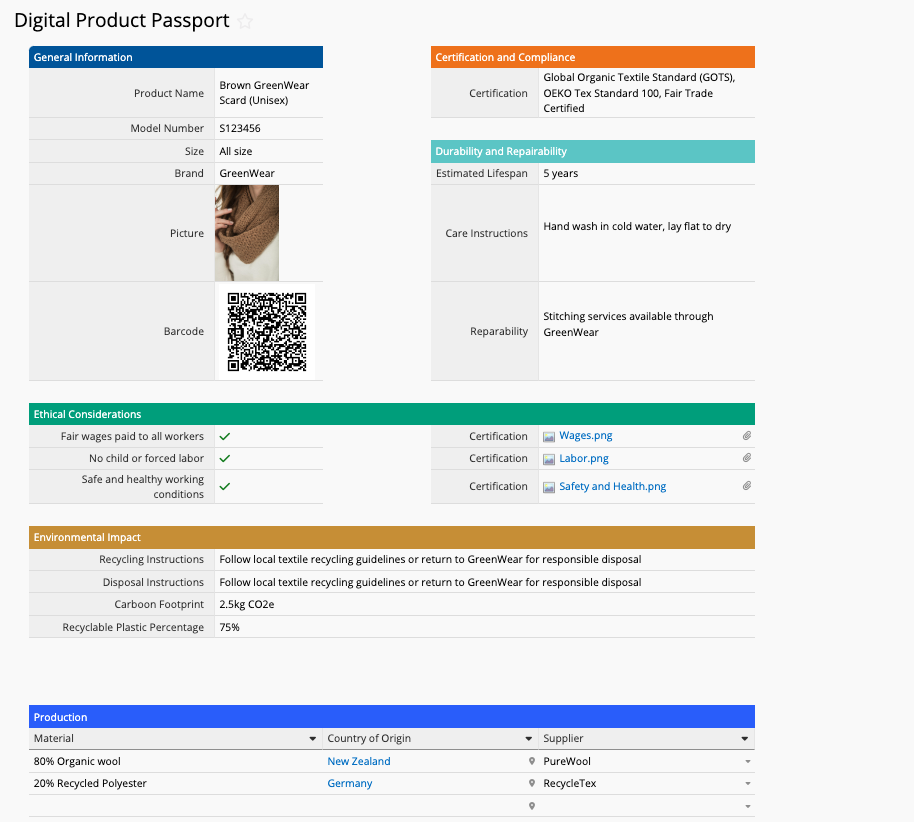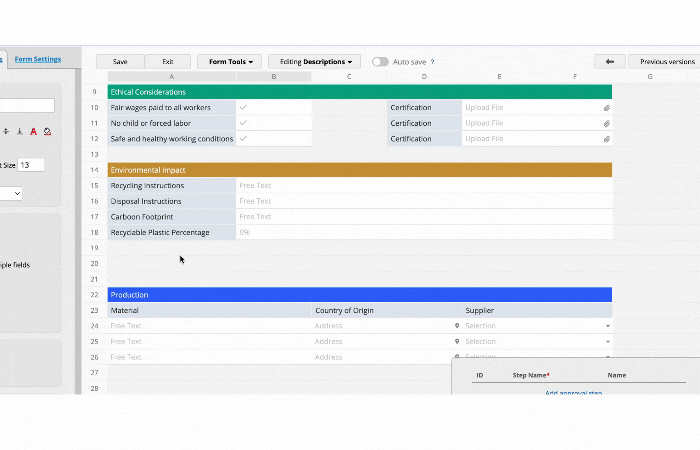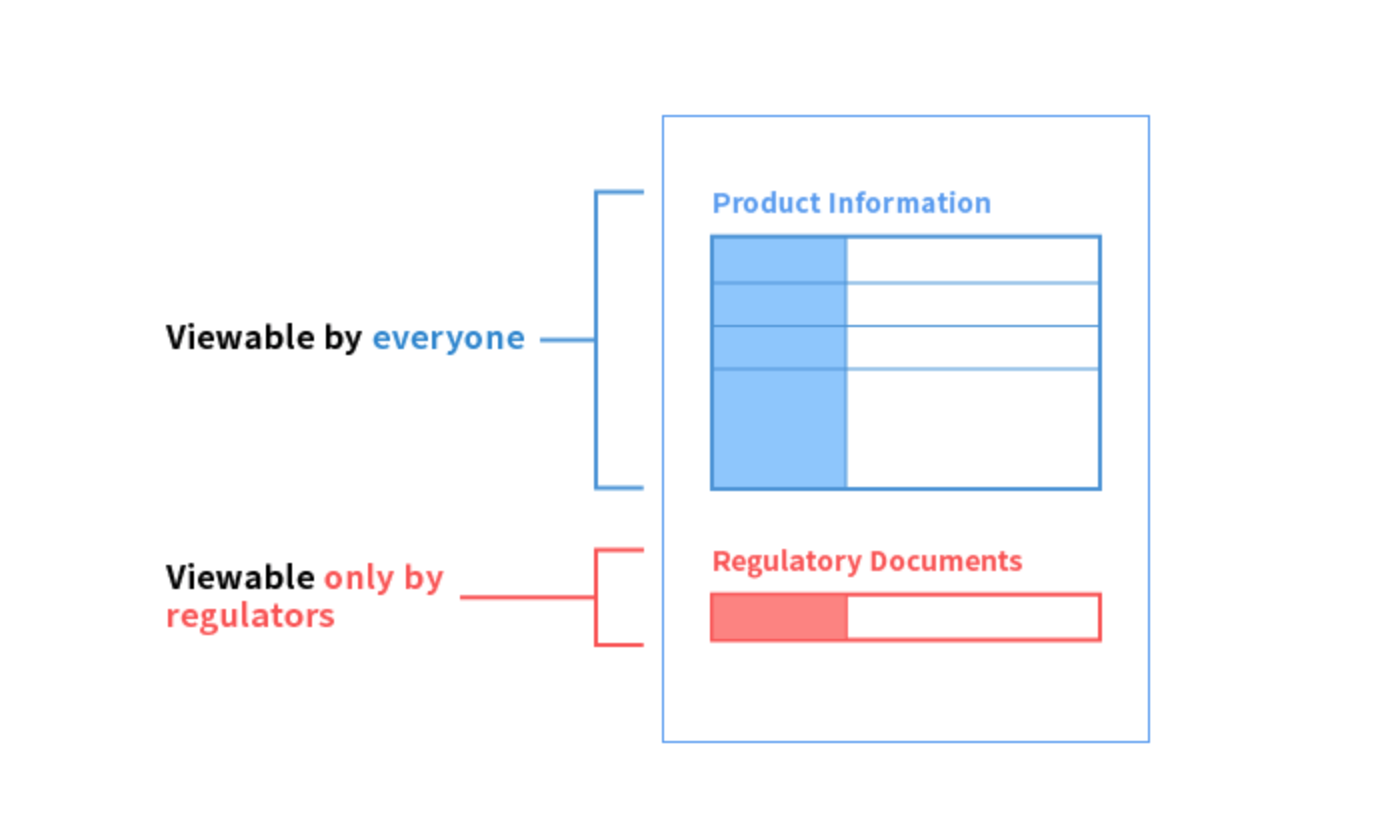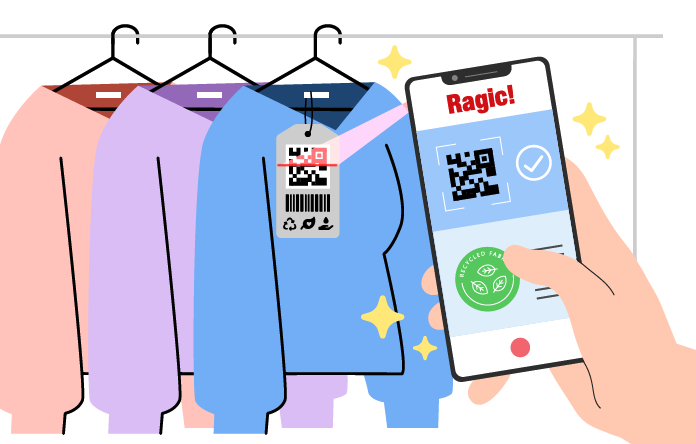EU Digital Product Passport: Every ‘What’ You’re Wondering, Explained Like You’re Five
If you’re here, chances are you’ve heard of the Digital Product Passport (DPP), know it affects you, and are looking for solutions. The regulation details are still unfolding, and let’s face it—everything feels overwhelmingly complex. Managing the sheer volume of supply chain data is no small feat for any retailer, especially if you’re a small or medium-sized business (SMB).
Big corporations typically have a 10-person legal team dedicated to ensuring compliance, but for leaner SMB teams already juggling multiple responsibilities, navigating this regulation can feel like an uphill battle. Maybe you’re asking:
“I work with suppliers in Thailand—how do I even start gathering all the certifications and material details from them?!”
“I sell hundreds (maybe thousands) of products. How do I properly keep track of all the care instructions, recycling info, and material details for each one?”
“Once I gather all this information, where do I store it? And how do I create something like a QR code so it’s accessible to customers and regulators?”
"Can I use one system to manage the DPP for all my products and handle inventory, while ensuring customers can only access the DPP, but staff can access inventory?"
Despite these questions, one thing is clear: starting now is the best way to prepare for this regulation.
But…. Why start now if nothing’s finalized yet?
Managing your supply chain’s complexity and preparing for the Digital Product Passport won’t happen overnight. The DPP will require detailed information about your products, and gathering this siloed information and organizing it into a system takes time. The sooner you begin, the more granular and reliable your data will be, putting you in a stronger position for DPP compliance. And no one wants to risk losing sales by being unprepared when the regulation kicks in.
What’s the right way to get started?
For SMBs, the need is clear: you need a flexible, affordable solution that allows you to begin gathering DPP-related data now, without adding complexity or overspending. But we understand the hesitation: "I don’t even know the finalized regulation yet. I know a few things I can start gathering data on, and I need a system to handle that—but what if I need to adjust it later to fit new requirements?"
This is exactly why SMBs have an advantage. Unlike large corporations bogged down by bureaucracy, you can pivot quickly and adapt to changes. The key is finding a system that’s both scalable—able to evolve with the regulation——and cost-effective, so you don’t overspend to get started.
Ragic, is a no-code database builder that could help SMBs navigate through getting started with building your Digital Product Passport system. It offers the flexibility to customize your system as DPP requirements become clearer. With minimal complexity and an intuitive setup, it’s perfect for smaller teams managing diverse responsibilities. Start building your database now, knowing you can adjust and expand as needed—without blowing your budget.
So let’s start with the basics, Digital Product Passport 5W1H
What:
You could compare it to a "Product ID Card". Just like how you have a name, birthdate, and address on your ID, the DPP holds all important details about a product—where it comes from, what it's made of, and how to take care of it.
Where:
The DPP will be required for almost all products sold in the European Union as part of the European Union's Sustainable Product Regulation (ESPR).
Why:
The DPP helps us make sure products are good for the planet. It tells us how to recycle things, reuse materials, and make smart choices about the stuff we buy!
Who:
Manufacturers, importers, and retailers are responsible for creating and maintaining the DPP for their products. Consumers and regulators will use this information to ensure sustainability and compliance.
When:
The DPP is expected to be implemented between 2026 and 2030, with more specific regulations expected for certain product categories, such as batteries, which will require compliance by 2027.
How:
Products will need a data carrier (e.g., a QR code). When scanned, this will display all the required information.
Which products will require a DPP?
● Batteries: : Battery passports are already mandated for implementation from February 18, 2027. This includes batteries for electric vehicles, industrial batteries with a capacity greater than 2 kWh, and batteries for light means of transport.
● Textiles: Expected to be mandated by 2030.
● Construction Materials
● Electronics
● Plastics & Chemicals
● Automotive Sector
What should be included in a Digital Product Passport?
Product ID: A unique identifier like a Global Trade Identification Number (GTIN).
Compliance Docs: Certificates, technical documentation, and conformity declarations—- certificates that say the product meets all the important rules.
Source Material: Information about the materials used in the product and where they were sourced.
Substance Info: Data on harmful substances used in the product.
User Instructions: Manuals, safety warnings, and usage guide.
Manufacturer & Importer Info: Contact details and identifiers for manufacturers and importers.
Eco Labels: Any environmental certifications, like the EU Ecolabel.
Performance Data: Information on product performance and key features.
Maintenance Tips: How to use, maintain, and extend the product’s life.
End-of-Life Info: Instructions for recycling or disposal when the product is no longer in use, reuse, or remanufacturing.
Additional Info: Any other relevant details that affect how the product.
Digital Product Passport Sample
How could Ragic help you in navigating this DPP regulation?
Spreadsheet-style interface, easy design and modification
Ragic’s spreadsheet-style interface makes it easy to create and organize your DPP data. You can set up product sheets, define required fields, and input detailed information in a structured, user-friendly way.
As mentioned, since the regulations are still involving, the information you need to include in the DPP might change too. For example, at the preliminary stage, you might only need to track "Recycled Plastic Percentage", which is just a simple number. But as the regulation evolves, you may be required to specify the exact source of the recycled plastic and provide supporting certifications.
For this, you need a system that could dynamically evolve with the regulation, a system that allows changes, without the hassle. Ragic helps you lay the groundwork for the data you need now, and as regulations evolve, your DPP sheet can evolve with you. It's as simple as adding a field in Excel. You want to start gathering data now to ensure you're prepared for when DPP implementation requires more granular details.
Editing a sheet design in Ragic
Data privacy control: Tailored access rights for different stakeholders
The data in a Digital Product Passport (DPP) must have controlled visibility, tailored to different stakeholders, for example:
A. Consumers: Need access to general product information like composition, country of origin, carbon footprint, and sustainability certifications. Their role is limited to viewing this data without editing or modifying it.
B. Businesses and Supply Chain Parties: Depending on your workflow, this might involve one central party inputting all data, or multiple stakeholders—like producers in different stages or logistics companies—handling their specific tasks (production details, etc). These users require access rights tailored to their roles, enabling them to input or update relevant data while restricting access to unrelated information.
C. Regulators: Require detailed information to ensure compliance, including audit trails and regulatory documentation, data that is typically sensitive and not necessarily accessible to general consumers.
Ragic offers both group-level and user-level access rights to manage data visibility effectively. Taking the example above, Consumers (Put as EVERYONE group, people that don’t need to log in with email to access this information) could have “Viewers” right, while Businesses and Supply Chain Parties could have “Survey User” rights. For the information that is only available for Regulators, Ragic also supports Field Level Access Rights. In the same sheet, you could add some fields that are only accessible to Regulators, and other parties won’t be able to access it. This access rights also makes Ragic scalable as your internal tool, whether you want it to be Inventory, or CRM management, etc, you just have to make sure that the information there will only be accessible to your internal staff.
QR Code integration for easy sharing
In the case of DPP, each Product Sheet can be generated as QR code in Ragic. Once scanned, the respective customer gains quick access to the relevant data.
GDPR compliance and data sovereignty via EU server
Hosting DPP data on Ragic’s EU server ensures compliance with EU regulations, including GDPR, to meet the EU’s strict data protection standards.
Filtering and sorting for internal efficiency
Ragic’s data filtering and sorting capabilities help your team work more efficiently with large datasets. For example, if you have hundreds of thousands of products and need to find those missing a Human Labor Ethical Certificate, simply use the filter bar. Set the "Human Labor Ethical Certificate" field to empty, and you’ll instantly see the products that need updates.
If you’re ready to start building your Digital Product Passport in Ragic, here’s a step-by-step guide to help you out. You can try it for free with Ragic’s free plan—no strings attached.
Just dive in, start building, and let your workflow grow as you go. The regulation’s coming, but starting now, gathering and organizing the data (even just a little bit) can make things easier down the road. Don’t let the complexity hold you down—taking the first step is the hardest part.
Catégorie: Applications > Use Cases







